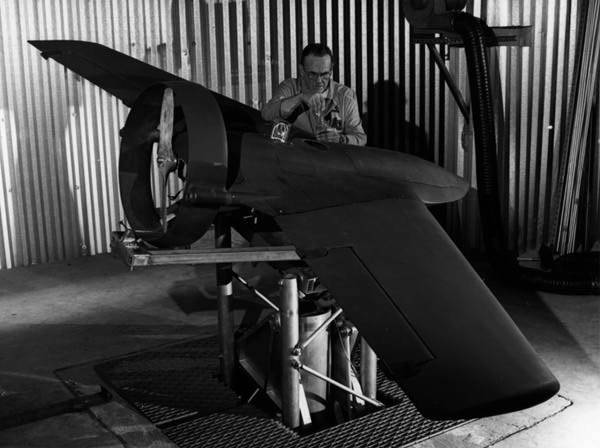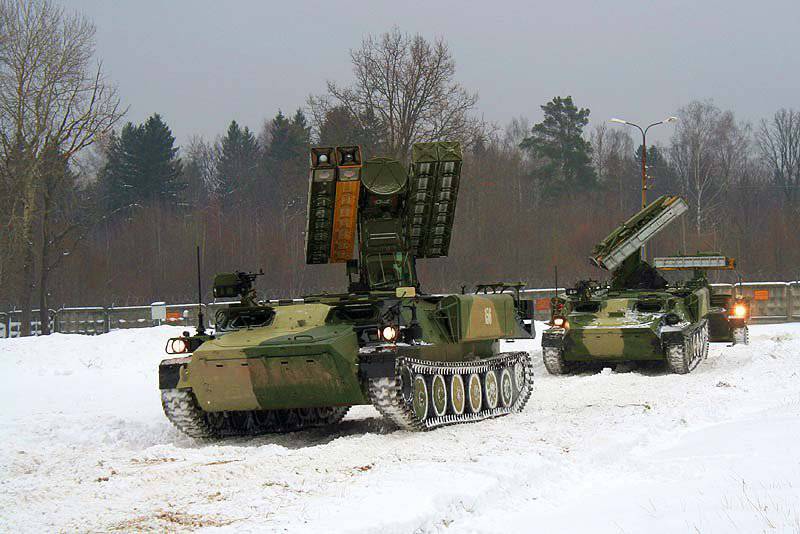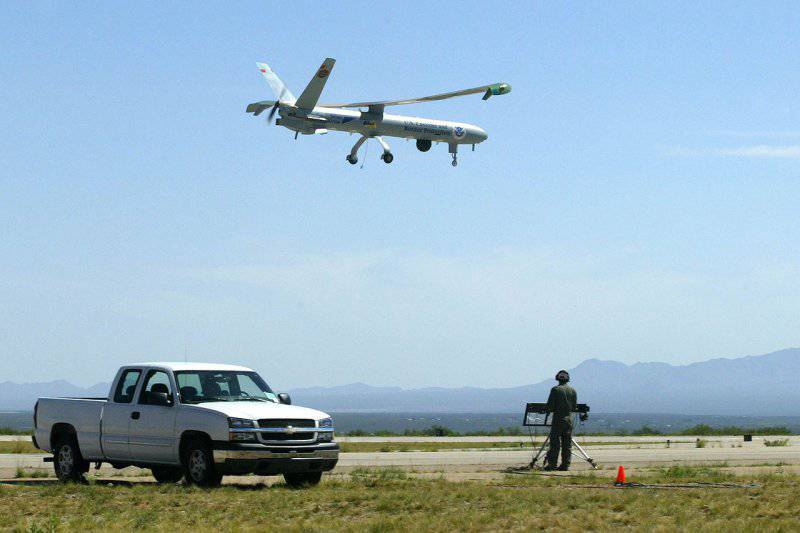Assessment of the capabilities of anti-aircraft weapons in active counteraction to small-sized UAVs
Как was defined above, reconnaissance assets that should provide anti-aircraft systems with timely information on the coordinates of air targets, while working on small-sized UAVs, are not yet able to cope with this task. Realized detection ranges do not allow the command posts (control points) of anti-aircraft groups to participate in the process of controlling the fire of subordinate means, thereby reducing the potential combat capabilities of the groups. In such cases, anti-aircraft fire (launch of missiles) by air defense systems should be carried out independently (autonomously) on the basis of previously given instructions on firing. In this case, the initial data for the preparation and conduct of firing (UAV coordinates) should be issued by reconnaissance equipment available as part of the air defense missile system (ZAK). Modern anti-aircraft complexes are designed in such a way that each firing unit has an autonomous system of reconnaissance of air targets as part of a circular review radar, sector search radar, radio receiving complex, passive radar, television optical sight, thermal imager, optical sight, and so on. .
However, firing units in the conduct of the fight against small-sized aerial targets face similar problems, due to the specifics of the construction and combat use of the UAV.
The main factors contributing to the complexity of the fight against UAVs:
• low weight and dimensions and, as a result, a small detection range;
• low acoustic noise level (around 50 dB at distances above 1000 m, which is below the hearing threshold);
• insignificant values of the effective area of dispersion (0,01 – 0,1 м2) and thermal contrast;
• low vulnerability of the structures of the bearing surfaces from the fire impact of air defense systems;
• a fairly wide range of flight speed (10 – 30 m / s);
• availability of opportunities for suppression and self-destruction of air defense systems;
• ability to direct attack aircraft, helicopters and artillery to air defense assets;
• ability to fly at extremely low altitudes (up to 200 m);
• insensitivity to the psychological effects of fire of air defense systems of air defense systems.
Studies of the fire capabilities of the air defense missile system Secondary class (type Hermes-450) have the following anti-aircraft complexes (systems):
a) around the clock: Buk-М1 SAM, "Thor-M1" и SAM "Osa-AKM";
b) in the daytime (with optical visibility): "Tunguska-M" и LAW "Strela-10М3".
However, effective defeat tactical reconnaissance mini-UAVs is extremely difficult. This is confirmed by the practical results of firing range of the air defense missile system at small unobtrusive mini-UAV air targets.
Thus, the results of field tests showed that the radar of the autonomous anti-aircraft systems "Top-M1", "Oca-AKM" are able to detect mini-UAVs at 3,3 – 7,4 km ranges. Given that the speed of the mini-BLAH is of the order of 50 – 250 km / h, the combat calculations of these air defense missile systems will have enough time to conduct pre-launch operations and shelling the target. Nevertheless, the practical experience of experimental shooting at small targets - analogues of UAVs ("Bee", RUM-2MB and "Flight") testifies to the low effectiveness of their defeat. The main reasons for this are the imperfection of the control system for undermining the warhead of the missile defense system, as well as large errors in tracking the target and guiding the missile defense.
The results of the evaluation of the possibility of firing a missile defense system "Tunguska" on a mini-UAV show that firing missile weapons at this type of target is almost impossible. This is due to the fact that the detection range of a mini-UAV in an optical sight is only 2 – 3 km, which is almost equal to the distance to the near border of the affected area of the complex.
Shooting ZPRK "Tunguska" cannon armament fundamentally possible. However, due to the small geometric dimensions of the BLAH, the effectiveness of firing at it will be low.
Practice shows that when firing a mini-drone type Aquila cannon armament at a distance of 3 km to achieve a conditional probability of hitting a target equal to 0,5, you must expend from 4 to 13 thousand anti-aircraft projectiles (i.e., 2 – 6 b / c), and at a distance of 1 km from 0,5 to 1,5 thousand shells (0,3 – 0,8 b / c).
For the same reason shooting ZSU-23-4 on targets such as "mini-drone" is also ineffective.

Mini-BLA Lockheed MQM-105 Aquila
When shooting MANPADS "Igla" mini-UAVs are affected by the difficulty of detecting a small-sized low-noise aerial target. Timely detection and launch of missiles at such a goal for the gunner will be extremely difficult.
This is due to the following factors:
• a decrease in the contrast of the target image when the optical device moves (moves);
• the rapidly developing visual fatigue of the gunner;
• low acoustic noise of a mini-UAV engine (around 50 dB at a distance of 1000 m, which is below the sensitivity threshold of the organs of hearing);
• reduction of time for analysis of the surveyed space.
Moreover, if even a small-sized target was found, the homing head (GOS) of the missile defense system may simply not capture the target. This is due to the fact that the thermal contrast of a mini-BLAH, having mainly piston engines, is two orders of magnitude lower than the threshold sensitivity of the GOS ZUR receiver. In addition, the low effectiveness of firing of the Igla MANPADS for a mini-BLA is also explained by the absence of a system for remotely undermining the combat unit of the Zur-Zor.
In subsequent modifications of this MANPADS, a non-contact fuse was introduced, providing for the undermining of the missile’s combat equipment as it flies relative to the target with some slip. In addition, increasing the effectiveness of firing the complex at small targets (CD, UAV) was achieved by increasing the power of the missile defense system, optimizing its accuracy characteristics, etc.
Evaluation of the Strela-10М3 air defense system shows that the complex is capable of striking mini-UAVs of the Akila type only in daytime conditions. The possibility of firing the “Strela-10М3” air defense missile system at this type of target is mainly determined by the target detection range of the operator and the range of capture of the GOS ZUR. The average detection range of the Akila-type mini-UAVs by the Strela-10М3 SAM system is 1,3 – 4,5 km, which is extremely small for effective shooting. The operator's use of an integrated optical sighting device in a limited search sector (if accurate target designation is available) allows increasing the detection range of a small target 1,5 – 2,1 times.
For similar reasons, the calculated capture range of the Akila-type mini-UAV of the Akila type photocontrast channel (FC) will be low and amount to 2,8 – 3,5 km, and target acquisition by the infrared channel (IR) is generally impossible due to its extremely low thermal radiation.

LAW "Strela-10М3" capable of striking a mini-UAV only in daytime conditions
At the same time, it should be noted that the Akila UAV is an obsolete mini-UAV that has been removed from service, and modern mini-UAVs have smaller dimensions and thermal contrast in 1,5 – 2. The effectiveness of shooting at such targets (already low) will be significantly reduced.
Experimental studies, including the results of combat launches at targets - analogs of small-sized air targets showed that the shooting at the Strela-10SV, Strela-10М systems was carried out mainly in the FK range, and on the heading in a limited part of the zone start. The missile launch ranges for these complexes averaged 1,5 – 2,0 km. The upgraded Strela-10М3 ADMS has higher shooting capabilities at small mini-UAV air targets, as the reaction time has decreased, the missile warhead weight has increased, the likelihood of the proximity sensor has increased, and automated target targeting processing has been implemented .
Thus, the results of studies of the possibility of detecting and destroying mini-UAVs by means of air defense troops indicate that the detection of small targets by the radar stations KP units and subunits of the air defense troops is ineffective, and often impossible even in a noiseless environment. Radar detection of these targets is difficult due to the influence of radar reflections from the underlying surface and local objects. Due to the low speed of the mini-UAV flight, the reflected signal can be completely or partially suppressed by the MCC. As a result, the problem of recognition of a mini-UAV also remains unresolved.
The anti-aircraft systems of the air defense forces have extremely limited capabilities for detecting and firing mini-UAV type air targets. These air defense missile systems (ZAK, ZPRK) were developed to solve many tasks, including to defeat small targets, but the rapidly developing means of air attack once again outstripped the development of air defense weapons systems, turning to the use of UAVs with extremely small EPR values.
The appearance in service of military groupings of micro and nano UAVs turned out to be another surprise and still an unsolvable "surprise" for the modern air defense system of troops and objects.
It is obvious that in such conditions it is necessary to develop a system of measures for the organization and maintenance of an effective response to small-sized UAVs.
Yeremin Gleb Vladimirovich - Colonel, Head of the Military Academy of Troops Air Defense of the RF Armed Forces
Anatoly Dmitrievich Gavrilov - Leading Researcher of the Military Academy of Military Air Defense of the Armed Forces of the Russian Federation, Doctor of Military Sciences, Professor, Reserve Lieutenant General
Nazarchuk Igor Ignatievich - Senior Researcher of the Military Academy of Army Air Defense, Lieutenant Colonel of the Reserve

Information